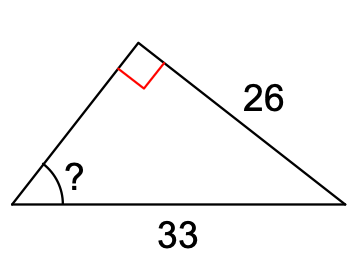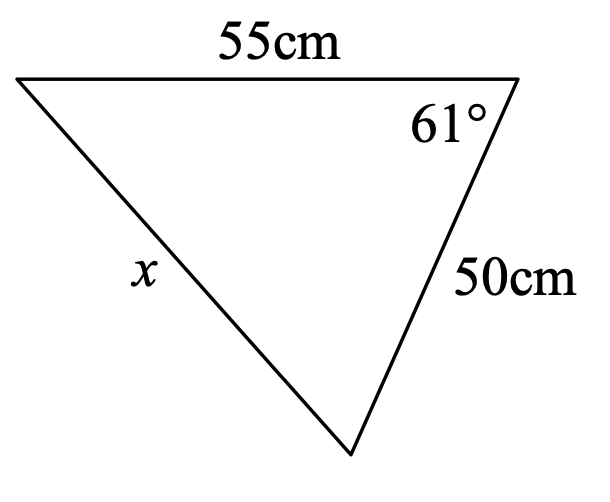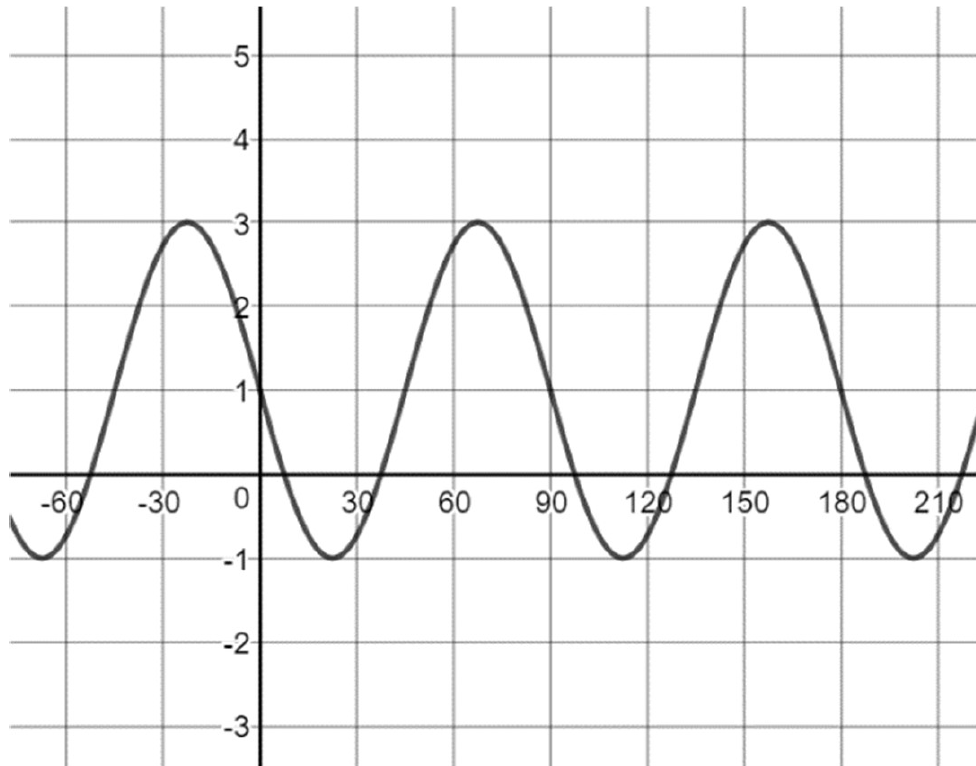What are the base ordered pairs for an exponential function?
(0, undef)
(-1, -1)
(1, 1)
(undef, 0)
Find the roots of the following quadratic equation:
y=x^2-2x-15
x=-3 and x=5
State restrictions
(x+6)/((x-3)(x+4)(x+6)
x=-6, x=-4, x=3
Solve for the missing angle.
x=52
Determine if the sequence is arithmetic, geometric, or neither.
{10, -11, 12, -13, ...}
Neither
Emma invests $1000. How long would it take for her investment to double if she earns 5% simple interest?
20 years
Simplify.
(2a^2b^3)^4/(4ab^2)
4a^7b^10
How many roots does the quadratic function
y=-4x^2+5x-1
2 real roots
Simplify
(x^2+3x-18)/(x^2-9)
(x+6)/(x+3)
Solve for x.

x= 53.47 cm
Determine the general formula recursive formula for the following sequence: {6, 10, 14, 18, ...}
a_n=2+4n
a_n=a_(n-1)+4
On his 15th birthday, Jake invests $10 000 at 8% compounded monthly. If he leaves his investment in the account until he is 65, how much will his investment will be worth when he takes it out?
$538 781.94
Solve for x
5^(x-1)/25=1
x=3
State the transformations applied to the function:
f(x)=-4(x-1/2)^2+3
Reflection in the x-axis
Vertical stretch by a factor of 4
Horizontal shift 1/2 units right
Vertical shift up 3 units
Expand and Simplify
((x^2+x-2)/(5x+10) )times((x^2-25)/(x^2+2x-3))
((x+5)(x-5))/(5(x+3))
Determine the related acute angle of -210 degrees
30 degrees
Find the thirteenth term of the sequence.
{9, -27, 81, -243 ...}
4 782 969
Aminah plans to invest $1000 at the end of each 6 month period in an annuity that earns 4.8% interest compounded semi-annually for the next 20 years. What will be the future value of her annuity?
$65 927.08
State the transformations applied to the exponential function below.
f(x)=4/(2x+6)-5
Vertical stretch by a factor of 4
Horizontal compression by a factor of 1/2
Horizontal shift left 3 units
Vertical shift down 5 units
Find the maximum value of
y=-5t^2+40t+100
The maximum value is 180
Expand and simplify.
(4x^2-3x-1)/(3x^2-5x+2) divide (4x^2+9x+2)/(3x^2-4x-4
1
State the maximum and minimum of the trig equation
y=4sin(x+45)+5
max: 9
min: 1
Calculate the sum of the series.
- 3 - 6 - 12 - 24 - ... - 768
22b 469
Sai wants to make monthly deposits into an account that guarantees 9.6% compounded monthly. He would like to have $500 000 in the account at the end of 30 years. How much should he deposit each month?
$240.80
The price of college tuition increases at a rate of 3.2% per year. If the current price of tuition is $2417, what was the price 5 years ago?
$2064.80
Determine the value for k for which the quadratic equation has one root
f(x)=9x^2+kx+25
k=30
Simplify and state restrictions
(3x)/(x^2-16)-(4x)/(x^2-2x-24)
(-x(x+2))/((x+4)(x-4)(x-6))
x=4, x=-4, x=6
Which sinusoidal curve (sine, cost, -sinx, -cosx) would you use to represent the graph below with NO 'd' value. 
y=-sinx
The 7th term of an arithmetic sequence is 53 and the 11th term is 97. Determine the 100th term. Then calculate the sum of the series.
a_100=1076
S_100=
Kira borrowed $200 000 from the bank to purchase a yacht. If the bank charges 6.6% compounded monthly, she will take 20 years to pay off the loan. How much will each monthly payment be?
$1502. 94